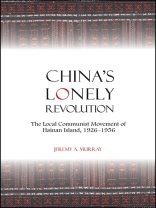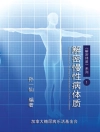Presents a new view of the Chinese revolution through the lens of the local Communist movement in Hainan between 1926 and 1956.
Jeremy A. Murray’s study of local Communist revolutionaries in Hainan between 1926 and 1956 provides a window into the diversity and complexity of the Chinese revolution. Long at the margins of the Chinese state, Hainan was once known by mainlanders only for its malarial climate and fierce indigenous people. In spite of efforts by the Chinese Nationalists and the Japanese to exterminate Hainan’s Communists, the movement survived because of an alliance with the indigenous Li. For years it persevered, though in complete isolation from Communist headquarters on the mainland. Using Chinese-language sources, archival materials, and interviews, Murray draws a vivid picture of this movement from the Hainanese perspective, and broadens our understanding of how patriotism, Party loyalty, and Chinese identity have been experienced and interpreted in modern China.
Зміст
Acknowledgments
Introduction
1. Cultivating and Exploiting a ‘Primitive’ Island: From Hainan’s Early History into the Twentieth Century
2. Political Prospects in the Early Republic: Revolution, Warlords, and Diaspora, 1912–1926
3. From Globetrotters to Guerrillas: Hainan’s Early Communists 57
4. An Outrage of Little Consequence: The Japanese Invasion and Occupation of Hainan
gallery of photographs
5. New Allies: The Baisha Uprising and the Li-Communist Alliance, 1943
6. Holding Aloft Hainan’s Red Flag: Disobedience and Survival in the Civil War, 1946
7. Sharing Victory: The Communist Conquest of Hainan Island
8. Bringing Hainan to the Nation’s Heel: Anti-localism in the Early PRC
Epilogue
Notes
Bibliography
Index
Про автора
Jeremy A. Murray is Assistant Professor of History at California State University, San Bernardino.












